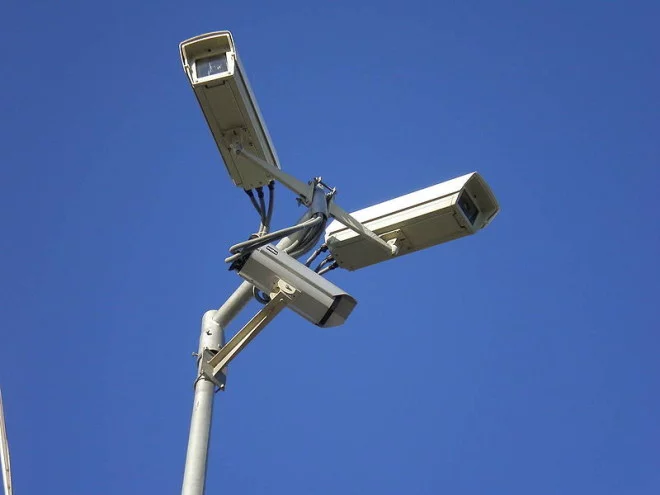
The surveillance state is nothing new.
On June 9, 1903, the USS Neckar dropped anchor in the port of Baltimore after a long transatlantic voyage from Bremen. Most passengers set foot on American soil for the first time. Upon their arrival, each person had to fill out a form consisting of the 20 following questions:
• First Name/Last Name
• Age
• Gender
• Marital status
• Profession
• Level of Education
• Nationality
• Place of last residence
• Final destination (do you have the ticket for this destination?)
• Name of the person who paid for the journey
• Do you have more or less than $30?
• Is this your first visit to the U.S.?
• Are you joining an acquaintance or a family member (if yes, the name and address of that person)?
• Have you ever been to prison or benefited from help of charities?
• Are you polygamous?
• Do you have an employment contract in the U.S.?
• Are you in a good physical condition (if not, what is your handicap?)
Some 108 years later, on June 6, 2013, The Washington Post published documents revealing the existence of the PRISM program, destined to collect data on American citizens. Among the main information gathered were email addresses, written and oral discussions via the Internet, videos, photos, stored data, file transfers…
These two examples constitute data collection on behalf of the state. Each illustrates the technical means used by the administration to collect this information with maximum efficiency – whether it is a simple form completed by an office worker or conducted through the means offered by modern information technology. These two methods also show that the government is definitely capable of conserving this data, whether it is through paper archives or a simple Internet connection. However, in the course of these 108 years, significant progress has been made in the data collection process by the state, as to both quantity and quality.
From Baltimore to PRISM: A Technological Leap
Concerning quantity, the progress is evident. In 1903, an immigrant landing in the U.S. provided no more than a single line of information, divided into 20 columns.
In 2013, the amount of information available on a person is immensely greater. At the same time, technical progress today permits storing this massive amount of data, far more than a poor office worker stuck in the port of Baltimore could have imagined. In 1903, the data collected would essentially focus on the relation between migrants and administration based on a number of previously defined moments (visa application).
Today, not only is the data collected without the citizens’ knowledge, but, in fact, it can be summoned at any time. Finally, the nature of the information has gone from binary (columns with only yes and no answers) to highly complex.
But technological progress alone does not explain why the data collection process has increased so much; it must also be seen as a choice made by governments and, let’s say it clearly, the development of a certain ideology.
The Specter of Totalitarianism?
In response to recent revelation, the media and intellectuals point to “1984,” Orwell’s book denouncing totalitarianism. Yet, there is nothing new to discover, because this reasoning behind increased surveillance of people has far more distant origins.
In 2001, the Patriot Act, passed hastily after the 9/11 attacks, completed the creation of a citizen database. But we often forget to mention that this database was initiated after the Civil War, in order to maintain the demographic balance between states, just like the Constitution mandated.
There is another defining moment. After the Great Depression, the Roosevelt administration developed very precise socioeconomic tools to measure the living conditions of the unemployed in order to measure the effectiveness of its flagship program, the New Deal.
Thus, initially the reasoning behind the surveillance programs was indistinguishable from the reasoning behind assistance, or even from protection of the citizen body, far from the paranoid vision that is often presented. But technology seems to have perverted the idea along the way.
Internet, from Democratic Utopia to Disillusionment
Designed to give a new democratic impetus to our increasingly controlled societies, the spread of information technology and of the Internet in particular has been widely perceived as synonymous with a new forum for political ideas, a new place of debate, freed from the rules of the consumer society, or even as a platform for protest movements (as the initiative WethePeople demonstrates).
This original utopia has lasted for a long time. The Internet is not only perceived as a generator of a race to the bottom of the population, being considered more and more as the place of multiple dependencies – online shopping, anti-social networks, games (from “Candy Crush” to sport betting), pornography – re-establishing the sovereignty of the consumer society in the digital landscape.
Thus, if government surveillance has changed its nature by means of technology, it is not really a novelty. And whether or not it is necessary to be worried about this slide, the fact remains that an outright rupture, or even an abandonment of digital spaces, deemed corrupt, is unproductive. Should we not, on the contrary, campaign for more transparency in the collection and use of our data?

Leave a Reply
You must be logged in to post a comment.